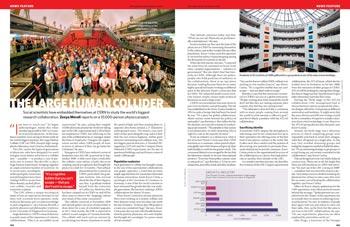I [chrisjhorn] spoke this morning at the Irish
Universities Association event on corporate governance. The main
theme of my presentation was the dangers inherent in poor stewardship of
intellectual property and the processes therein. This in turn is one
major reason for the urgent need for a national intellectual property
protocol.
Innovation is riskful.
Failure is an anathema. We have had outrageous failures in our banks, our health system, the Roman Catholic Church, in corporate governance, in public procurement and in regulatory oversight. Failure is devastating and unacceptable when a priori we have no reason to expect any deficiency. Failure may however be acceptable, if perhaps disappointing, when we know in advance that a venture may fail. For example, we accept failure in sport is because we cannot reasonably expect perpetual success.

 The saving of Luton and indeed of Britain, (restoring our 'Great' prefix) would be the New Technology Economic Model, a 'model' which has been identified around the world with USA, Canada and Malaysia taking a keen interest. The basic principle is the use of technological innovation to drive the economy. Today, the US has an economic stimulus package in basic R&D, biomedical research facilities and essential broadband infrastructure as a response to their economic environment. A major research university can provide a huge economic boost to a regional economy with the University of Calgary (Canada) benefiting Alberta economy about $50 million per year circa 1994, including faculty and professional staff knowledge transfer. Spin-off companies commercialise intellectual property from university laboratories and are significant drivers of innovation appearing to effectively transfer technology out of universities, leading to job and wealth creation. However to contribute to economic growth, they must survive and succeed. Canada reports over 80% of their spin-off companies are still in business five years from start-up.
The saving of Luton and indeed of Britain, (restoring our 'Great' prefix) would be the New Technology Economic Model, a 'model' which has been identified around the world with USA, Canada and Malaysia taking a keen interest. The basic principle is the use of technological innovation to drive the economy. Today, the US has an economic stimulus package in basic R&D, biomedical research facilities and essential broadband infrastructure as a response to their economic environment. A major research university can provide a huge economic boost to a regional economy with the University of Calgary (Canada) benefiting Alberta economy about $50 million per year circa 1994, including faculty and professional staff knowledge transfer. Spin-off companies commercialise intellectual property from university laboratories and are significant drivers of innovation appearing to effectively transfer technology out of universities, leading to job and wealth creation. However to contribute to economic growth, they must survive and succeed. Canada reports over 80% of their spin-off companies are still in business five years from start-up. 

 Two weeks from now in Deloitte's downtown Toronto office towers, 14 Canadian technology entrepreneurs will go on a dream date of sorts, hoping to hook up with eight Boston-based venture capitalists flying in for the day to scope out the talent.
Two weeks from now in Deloitte's downtown Toronto office towers, 14 Canadian technology entrepreneurs will go on a dream date of sorts, hoping to hook up with eight Boston-based venture capitalists flying in for the day to scope out the talent.
 Nearly every tech-focused venture capital firm in the Seattle area is
tossing financial support behind
Nearly every tech-focused venture capital firm in the Seattle area is
tossing financial support behind  Many of us are "burned out" from all the health care legislative
battles on the hill as well as the non-stop media analysis. Among what
appeared to be out of control unsupervised children fighting in our
government sandbox, there was one group of heroes working above and
beyond the call of duty.
Many of us are "burned out" from all the health care legislative
battles on the hill as well as the non-stop media analysis. Among what
appeared to be out of control unsupervised children fighting in our
government sandbox, there was one group of heroes working above and
beyond the call of duty.  "I am here to watch you." So began anthropologist Arpita Roy when introducing herself in 2007 to a roomful of particle physicists. At the time, those scientists were racing to finish work on the world's biggest machine, the Large Hadron Collider (LHC) at CERN, Europe's high-energy physics laboratory near Geneva, Switzerland.
"I am here to watch you." So began anthropologist Arpita Roy when introducing herself in 2007 to a roomful of particle physicists. At the time, those scientists were racing to finish work on the world's biggest machine, the Large Hadron Collider (LHC) at CERN, Europe's high-energy physics laboratory near Geneva, Switzerland. Another
Another 

 So you want to be the next big shot
entrepreneur to come up with an idea that will change the world, but
can't seem to come up with that golden ticket of an idea? Well perhaps
you need to look no further than the world of art for inspiration. While
looking through Hacker News posts, I stumbled across an illustrated
So you want to be the next big shot
entrepreneur to come up with an idea that will change the world, but
can't seem to come up with that golden ticket of an idea? Well perhaps
you need to look no further than the world of art for inspiration. While
looking through Hacker News posts, I stumbled across an illustrated 
 In mid-February, about a month after a massive earthquake leveled
much of Port-au-Prince, Haiti, a wound-care team from Brigham and
Women's hospital in Boston traveled to the devastated capital. The
team's task was to help care for scores of patients suffering from the
large open wounds that accompany amputations, crushed limbs, and other
injuries. Among the team was MIT graduate student
In mid-February, about a month after a massive earthquake leveled
much of Port-au-Prince, Haiti, a wound-care team from Brigham and
Women's hospital in Boston traveled to the devastated capital. The
team's task was to help care for scores of patients suffering from the
large open wounds that accompany amputations, crushed limbs, and other
injuries. Among the team was MIT graduate student  Venture capitalists have called for the creation of a Green Investment Bank (GIB) to accelerate private sector investment in support of the UK’s 2020 and 2050 low carbon, renewable energy and energy security targets.
Venture capitalists have called for the creation of a Green Investment Bank (GIB) to accelerate private sector investment in support of the UK’s 2020 and 2050 low carbon, renewable energy and energy security targets. Congress this week takes important steps toward investing in applied
innovation. We have known for decades, of course, that federal support
for research and development can lead to scientific discoveries and new
technologies that can solve some of the country’s most pressing
problems. But as House members hear testimony tomorrow from
Congress this week takes important steps toward investing in applied
innovation. We have known for decades, of course, that federal support
for research and development can lead to scientific discoveries and new
technologies that can solve some of the country’s most pressing
problems. But as House members hear testimony tomorrow from  BB pal
BB pal  The startup community in Philadelphia is abuzz over a provision in Senate Banking Committee Chairman Chris Dodd’s (D-Conn.) draft financial reform bill that could impose significant costs and uncertainties on angel investing.
The startup community in Philadelphia is abuzz over a provision in Senate Banking Committee Chairman Chris Dodd’s (D-Conn.) draft financial reform bill that could impose significant costs and uncertainties on angel investing.